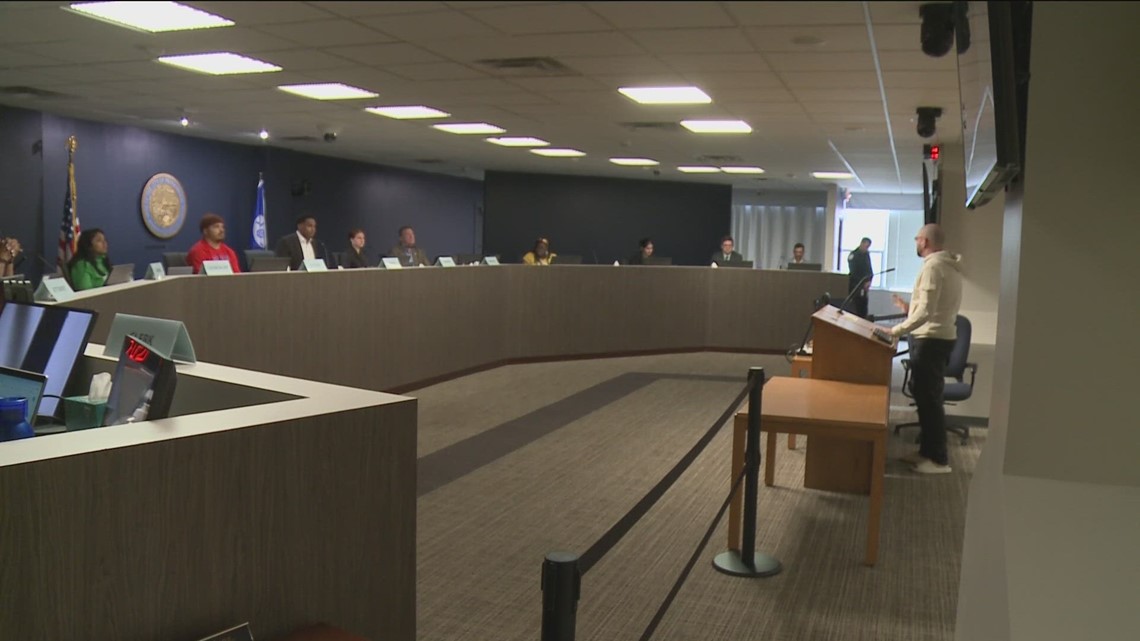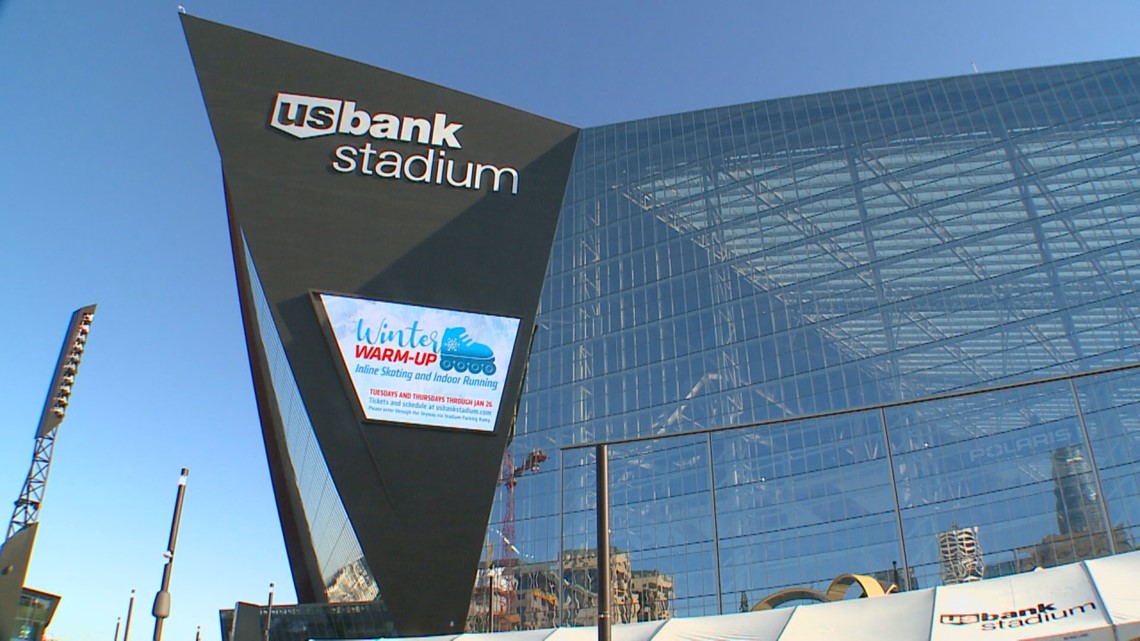Kare11
Rideshare ordinance gets green light, advancing to full council


Lyft and Uber are again threatening to leave the city if it passes.
MINNEAPOLIS — A proposal that would require rideshare companies to raise minimum driver pay is back on the table in Minneapolis.
The Business, Housing & Zoning Committee voted Tuesday afternoon to advance a plan authored by council members Jason Chavez, Jamal Osman and Robin Wonsley to the full city council for a final vote on Thursday, March 7.
Lyft and Uber are again threatening to leave Minneapolis if it passes. They also said this last year, when council passed a measure setting minimum pay standards for drivers. However, Mayor Jacob Frey vetoed it.
“From the feedback we gathered, it is clear that we must allow more time for deliberation,” Frey wrote in a letter at the time. “We need both additional data and conversations to be had to ensure the essential safety and well-being of rideshare drivers and riders alike.”
Similarly at the capitol last year, Governor Tim Walz vetoed a rideshare bill but started a state task force instead. That task force met for 6 months and in late December offered a list of recommendations, including that minimum compensation be paid in a per-minute, per-mile format. “At a minimum, compensation should be $5 for any transportation of a rider by a driver,” the report reads.
Minneapolis’ proposal would require rideshare companies to pay drivers at least $1.40 per mile and $0.51 per minute, or a minimum $5 per ride while working within city limits. It would also require the companies to give drivers 80% of fees collected for canceled trips.
Dozens of people spoke at a public hearing before the vote, including State Sen. Omar Fateh (D-62, DFL) and various rideshare organizations. All of the speakers expressed support for the plan.
“We drive when there’s 6 inches of snow out, we drive when we take a customer to Mayo or to Rochester, we drive when we have to take a customer to Duluth, so we need the city of Minneapolis to stand up for us,” said one Minnesota Uber/Lyft Drivers Association member with more than 10,000 Lyft rides under his belt.
“If you have to drive 30 miles to pick up someone to make $5, if you do the math it’s not worth it,” another driver added.
Nondrivers also spoke in support.
“Pull out of the city, I don’t see that happening, and even if it did, I don’t believe we should be afraid of the task of building community grounded alternatives,” he said.
Monday, several organizations sent letters urging council not to pass the ordinance, including the Chamber of Progress, Minnesota Hospitality, Minnesota Licensed Beverage Association and MPLS Downtown Council. They expressed concern over increased costs for riders, which they say would reduce availability of rideshare services and overall driver earnings.
“The proposed policy would raise the cost of rideshare for riders, with disproportionate impacts on lower-income Minneapolis riders,” MPLS Downtown Council President and CEO Adam Duininck wrote, adding that 56% of Lyft rides in the Twin Cities start or end in low-income areas. “Higher-income riders will likely be less sensitive to cost increases, but we are concerned that the proposed policy would turn rideshare into a benefit for wealthy residents and hurt low-income riders.”
Tuesday’s vote was 5 to 1, with council member Michael Rainville voting no.
Lyft and Uber sent KARE 11 these statements in response to the proposed ordinance:
“In the past few weeks alone, we have announced several new steps to improve driver earnings and transparency. This includes just this month announcing a new earnings commitment where drivers will always make at least 70% of the weekly rider fares after external fees. This is how we can improve driver earnings in a smart and deliberate way. The Council’s proposed bill, however, ignores economic reality. It pushes the same egregious mandates that were vetoed by the Mayor last year, and it could make rides on Lyft too expensive for too many. Should it become law, Lyft would be forced to cease operations in Minneapolis and possibly the rest of the state when it takes effect.”
“The proposed rates mean much higher prices for riders and less work and pay for drivers. After a period of near record inflation there aren’t many governments out there whose big idea is to make things more expensive. We have numerous concerns with the legislation which would force us to cease operating a transportation network company. The Governor’s task force put forward a comprehensive statewide proposal and we look forward to continuing working with the legislature on getting that passed this year.”
Watch the latest local news from the Twin Cities and across Minnesota in our YouTube playlist:
Kare11
Thanksgiving prices are cheaper than last year, but other groceries are still more expensive


A new survey suggests a Thanksgiving meal for 10 people is 5% cheaper compared to last year.
MINNESOTA, USA — Your Thanksgiving trip to the grocery store may be more affordable than you’d expect.
Every year the American Farm Bureau Federation tracks the prices of 12 Thanksgiving staples, including turkey, dressing, dinner rolls, and frozen peas.
According to this year’s survey, eight of the twelve food items are cheaper this Thanksgiving.
Sweet potatoes are seeing the steepest price drop with the average price nationwide 26% cheaper than last year.
A gallon of whole milk is also 14% cheaper this year, and canned pumpkin and turkey are both 6% cheaper as well.
According to the American Farm Bureau Federation, a Thanksgiving meal for 10 people will cost around $58, a 5% drop compared to last year.
However, once inflation is considered, the American Farm Bureau says the prices this year are the lowest they have seen since they started their annual survey 39 years ago.
“We’re always surprised to see that food prices are going down maybe when we aren’t necessarily feeling that way,” Minnesota Farm Bureau Education Coordinator Pam Debele says.
The survey results suggest the average trip to the grocery store may be cheaper when it comes to Thanksgiving staples, but Debele says the prices for other grocery items may still be higher than in years past.
“There are twelve items on this list that maybe aren’t things that we normally eat every meal,” Debele says.
Plus, the Minnesota Turkey Growers Association says many grocery stores will sell popular Thanksgiving items like turkey for a loss as a strategy to lure in potential customers
“Turkey is the biggest loss leader this time of year,” Minnesota Turkey Growers Association Executive Director Ashley Kohls says.
“What you see for prices in the grocery store for turkey, frozen turkey especially, does not match what current markets are for turkey.”
The latest Consumer Price Index also shows prices for “Food at Home” have gone up 1.1% since last October.
Some specific grocery items have experienced even higher price increases this year.
The latest CPI report shows egg prices have increased 30% since last October, oranges have gone up by 7.2%, and some condiments have seen a 22% increase this year.
Besides surveying food prices around Thanksgiving, the American Farm Bureau Federation also surveys food prices a few weeks before the 4th of July holiday.
This year’s survey suggests the average 4th of July BBQ for 10 people cost around $71.22 which is higher than last year’s cost of $67.73 which marks a 5% increase and a 30% increase over the last five years.
So, enjoy these lower Thanksgiving prices while you can, because they won’t last forever.
Kare11
Anoka County authorities continue answers in 1973 cold case


Judy J. Bever was found weeks after her husband reported her missing in Blaine.
BLAINE, Minn. — Authorities in Anoka County continue their investigation into finding out what happened to a 24-year-old woman who was found shot to death more than a month after she was reported missing.
Judy J. Bever was dropped off at work by her husband on Oct. 11, 1973, according to the Anoka County Sheriff’s Office. She went to a mixed doubles bowling league and a coworker said they dropped her off half a block from her house, but her husband reports she never made it home, officials said.
Contemporaneous reporting from the Minneapolis Star says her body was found weeks later on Nov. 25, face up and fully clothed. An autopsy showed she was shot twice in the chest. It was reported there was no sign she was robbed or sexually assaulted.
According to the Anoka County Sheriff’s Office, her body was found in a swampy area near 99th and Xylite in the city of Blaine.
Anyone with information about what happened to Bever is encouraged to email ACSOColdCases@anokacountymn.gov.
The Anoka County Sheriff’s Office is working to solve cases like Bever’s with a new Cold Case Homicide Unit webpage that highlights unsolved cases being reevaluated by the office. Officials say you don’t have to tell them who you are, just what you know.
“A dedicated team made up of law enforcement and forensic science professionals evaluate and prioritize all cold cases and evidence, and test, or retest evidence to further the investigation,” a press release from the sheriff’s office said. “The ultimate goal is to hold offenders accountable and bring closure to victims’ families, while providing support throughout the process.”
Kare11
U.S. Bank Stadium announces indoor skating and running program


The Minnesota Vikings’ home will be open from 5-9 p.m. on most Tuesday and Thursday evenings in December and January.
MINNEAPOLIS — Welcome to the Thunderdome, U.S. Bank Stadium officials will say to runners and skaters soon.
The annual Winter Warm-Up, an indoor running and inline skating program, returns to the closed-roof stadium beginning Tuesday, Dec. 3, and ending Thursday, Jan. 23.
The Minnesota Vikings’ home will be open from 5-9 p.m. on most Tuesday and Thursday evenings in December and January, featuring twelve running-skating sessions.
The Winter Warm-Up is open to all ages, with the stadium’s main concourse dedicated to inline skaters and the upper concourse for runners.
Open skating is scheduled from 5 to 8 p.m. with speed skating set for 8 to 9 p.m. for the session.
Skaters will need to bring their equipment as skate rental will not be available.
“Skaters are required to bring their own safety gear, including helmets,” the news release states.
Phone use is not permitted while skating on the main concourse as is wearing headphones, earbuds, speakers or any other music accessories.
Strollers are not allowed on either concourse. Security staff will conduct bag searches at the entrances.
Admission is $15 a person and tickets can be purchased at this link.
For more information, click here.

